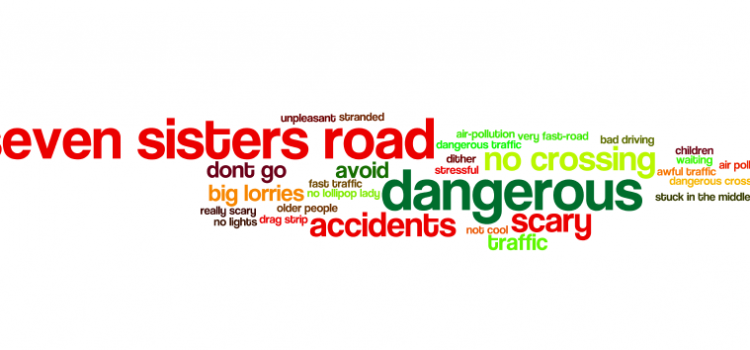
Word Cloud from Woodberry Down Perception Mapping
Community mapping from the first pilot for the Street Mobility Project has provided interesting insights into how the people of Woodberry Down have adapted to the presence of a major busy road cutting through their estate. They told us how communities and movement networks evolved round connected neighbourhoods on different sides of the road, most often made up of the friends and neighbours in their housing block.
There was a real community – We all knew each other, our children grew up together and you knew who your neighbours were, we all looked out for each other and the children. We never really went over Seven Sisters Road, there was no real need to.
Woodberry Down resident (80)
Residents have created individual movement patterns and preferred route ways in order to accommodate and avoid the heavy traffic flows and perceived dangers of the road. However they report a major barrier to mobility is the experience of attempting to cross the road, even in places where there are effective facilities in place:
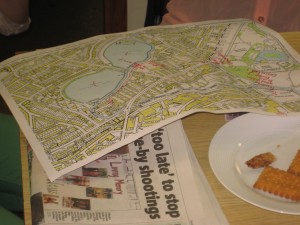
Personal mobility and barrier mapping
Crossing that road (Seven Sisters) makes me feel like “A fairy on a rock cake” all of a dither.
Woodberry Down resident (86)
Seven Sisters Road is like a drag strip. Motorbikes race each other I have seen so many accidents.
Woodberry Down Resident (50)
The unfortunate experience of one elderly resident highlighted the dangers and the impact that having to cross the road can have on mobility and independence. A previously independent 97 year old now feels unable to go out as a result of falling in the central reservation. Harry, aged 97, recently fell on the central reservation when crossing Seven Sisters Road and had to go to hospital, he says he has “aged twenty years since the fall” before he fell he used to go to Stamford Hill, South Tottenham “everywhere” but now he is afraid to go out and says he has lost his confidence.
Older residents participate in both formal and informal recreational and leisure activities locally and in some cases ventured further afield. They enjoy walking on the pathways round the West Reservoir and to Finsbury Park and Clisshold Park to make use of nearby green space. However fear of crime and feelings of insecurity were major barriers to participation in evening or night time activities. Especially single residents said that being “home alone” in the evenings, particularly in winter limited their sense of well-being and social connectedness.
I get fed up of an evening staring at the four walls, I end up talking to them like Shirley Valentine “hello wall” Woodberry Down Resident (50)
New families moving into the area are beginning to create their own social networks, re-negotiating the space and making their own personal geographies around the Seven Sisters Road, using alternative routes to avoid having to cross or walk alongside the main road with children. The location benefits from excellent public transport links and to a large extent this allows residents to avoid the traffic.
Initial findings from this first pilot study have shown that participatory mapping is a useful tool for exploring community severance and that the processes at work, both culturally and physically appear to be more complex and subtle than those identified in the original Appleyard and Lintell’s (1972) seminal study. Work is now underway on the second pilot area in Finchley Road which will no doubt throw up more interesting perspectives on the strategies that people adopt, as they age, in order to go about their daily lives when living alongside busy roads.
Appleyard, D. , & Lintel, M. (1972). The environmental quality of city streets: The residents’ viewpoint. Journal of the American Institute of Planners, 38(2),84–101.
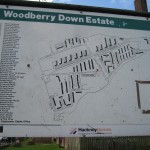
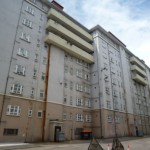
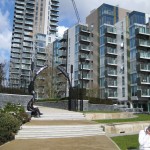
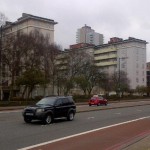
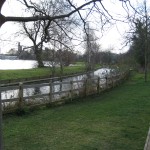
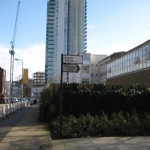
awesome
awesome